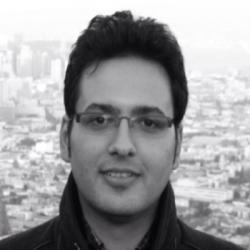
Nowadays, wireless devices cover numerous wireless communication standards where almost for each one a different frequency band has been allocated. There is a strong motivation towards SoC (System-on-Chip) solutions, where everything is integrated inside a chip to reduce the cost and form-factor of wireless devices. In radio-frequency receivers, due to the existence of large out-of-band blockers and limited dynamic range, band-select filtering of the input signal is essential. Currently, most of the frontend circuitry of transceivers can be integrated on-chip. However, it is not possible to build integrated high-performance band-pass filters even after more than a decade research on this very topic. The inherent losses associated with on-chip inductors lead to filters having relatively high insertion losses, limited dynamic range and low out-of-band rejection. For this reason, nowadays, most wireless systems utilize individual off-chip filters rather than fully integrated band-pass filters. This increases the size and cost. Moreover, most current wireless devices have several standards which leads to the exploitation of numerous off-chip band-pass filters which further exacerbate the size and cost issues. In this talk, we will present several filter designs that partially address this issue. These filters are based on N-path technique and MEMS. N-path filters can provide us with band-pass filters having high Q-factors and wide center-frequency tuning range. The center frequency of the N-path band-pass filter is set by its clock frequency and its bandwidth is determined by the value of its capacitors and source resistance. The principal constituents of N-path filters are switches, capacitors and a digital circuitry for providing clock signals needed for the operation of these filters. CMOS technology can offer very linear switches, high density capacitors and very fast digital gates. Therefore, CMOS technology is the best candidate for the implementation of N-path band-pass filters which are friendly with process scaling.
Furthermore, a new 60 GHz phase shifter and highly linear LNA for WLAN Front-End Module (FEM) application will be discussed briefly. We will demonstrate a new derivation of noise-cancelling receiver. Finally, I will have a short discussion about a technique for reducing the effect of phase noise in N-path filters.
Currently, he is with Broadcom Limited, Irvine, USA under the supervision of Dr. Hooman Darabi as a senior RFIC staff scientist working on several projects such as highly-linear Front-End Module (FEM) LNA for WLAN5G, a small low-power phase-shifter for 60 GHz and also conducting research on high dynamic-range receivers and filters for wireless applications. He has authored or co-authored several technical papers and patents.
